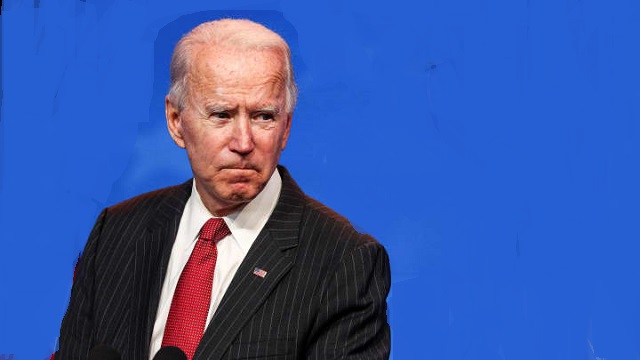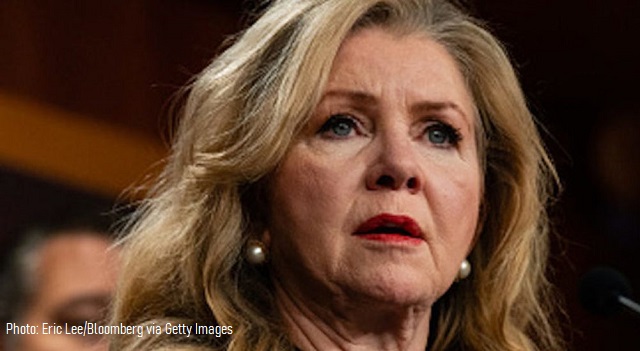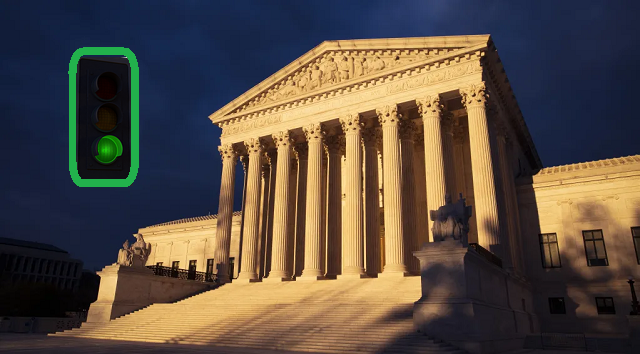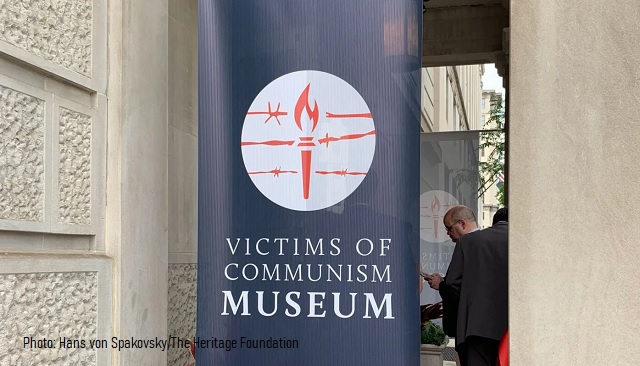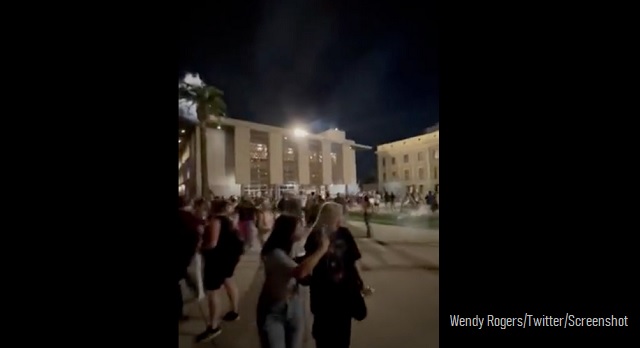The J6 Show Trial Is Lying About Election ‘Fraud’
By Mollie Hemingway
The January 6 show trial is partly about persecuting political opponents. But it’s also about covering up the truth of the 2020 election.
The purpose of the January 6 committee is to further the lie that there was nothing seriously wrong with the 2020 election and to criminalize any questioning of the election. The January 6 riot gives the committee a nice hook, but that’s not what they really care about.
They want to prevent you from admitting the election was irregular, faulty, or anything less than the most perfect election in the history of mankind, and from supporting people who fought against those irregularities. In service of this goal, the January 6 committee repeatedly lied about the actual claims Donald Trump supporters have made about the flaws in the election.
The January 6 Committee is conducting a show trial, not a criminal one. Show trials, common in authoritarian regimes, are held for propaganda purposes, to punish political opponents, and to cover up the truth of what the regime has done.
Democrats’ show trial is completely one-sided. The members on the committee were appointed exclusively by Democrat Speaker of the House Nancy Pelosi. There are zero Republican-appointed members. In fact, Pelosi refused to allow the top Republicans Minority Leader Kevin McCarthy picked for the committee — an unprecedented violation of House rules and norms.
No one represents the accused or advocates for their rights. No cross-examination or presentation of defense has been allowed from the targets of the trial. The committee does not follow House rules on evidence or witness depositions. The so-called investigation has declared off-limits any good-faith inquiry into issues that contradict their persecution, whether a look at what led to the lack of security by Capitol police forces or a look at the legitimate concerns about the unique and novel way the 2020 election was conducted.
The show trial is deeply and profoundly un-American. This week’s “surprise” hearing has already imploded under the weight of the inaccurate testimony given by young staff assistant Cassandra Hutchinson. But last Thursday’s episode also deserves scrutiny for the lies it contained.
That hearing was focused on Jeffrey Clark, a Department of Justice (DOJ) official during the Trump administration who had proposed more aggressive investigative and legal efforts in the controversial aftermath of the 2020 election than many of his peers. Incidentally, among the growing concerns about a ream of false statements given is a report that Hutchinson also lied about Clark.
The Misdirection On ‘Fraud’
The “storyline” for the committee’s June 23 televised spectacle revolved around a letter that Clark drafted and wanted other DOJ officials to sign and send to the leadership of the Georgia state legislature. Here’s a portion of Rep. Liz Cheney’s loaded remarks about this. Before reading them, it should be noted that it has already been shown that Cheney repeatedly lied about DOJ lawyer Ken Klukowski throughout the hearing:
Neither Mr. Clark nor Mr. Klukowski had any evidence of widespread election fraud, but they were quite aware of what Mr. Trump wanted the department to do. Jeff Clark met privately with President Trump and others in the White House and agreed to assist the president without telling the senior leadership of the department who oversaw him.
As you will see, this letter claims that the US Department of Justice’s investigations have ‘Identified significant concerns that may have impacted the outcome of the election in multiple states, including the state of Georgia.’ In fact, Donald Trump knew this was a lie. The Department of Justice had already informed the president of the United States repeatedly that its investigations had found no fraud sufficient to overturn the results of the 2020 election.
The words fraud or fraudulent were used some 50 times in Thursday’s hearing, typically in the way they’re used in the excerpt above. The Democrat-appointed members would claim that Clark was alleging election fraud and, further, that everything about the election had been fully investigated and there was no evidence of problems with the election.
There are two major problems with Cheney’s argument. First, if she had read Clark’s letter, she would have noticed that while it did discuss major identified problems with the election potentially affecting the outcome, it never once alleged fraud. Second, it is highly debatable that the problems with the election were ever competently investigated or even understood.
If you look at the actual letter Clark drafted for discussion, he referenced “various irregularities,” “significant concerns that may have impacted the outcome of the election,” and “irregularities, sworn to by a variety of witnesses.” He referenced a report arising from Georgia Senate hearings that had taken sworn testimony and affidavits from many people about the chaotic and troubling administration of the Georgia election.
The complaints included problems with ballot custody, inability to monitor vote tabulation, inadequately maintained voter lists, and the counting of ballots from ineligible voters. The testimony even included something that would become a massive concern of election integrity advocates — the private takeover of government election offices by Mark Zuckerberg-funded groups.
And Georgia really was a mess, Fulton County in particular. None of Fulton County’s respected Republican election commissioners voted to certify the election. They had numerous problems, including that the first certification vote was taken just hours after Fulton County was still finding, processing, and tabulating ballots.
During the run-off, thumb drives were accidentally left in voting machines, exacerbating their previous concerns about ballot custody and chain of command issues. The commissioners also were concerned that no chain of custody information had been provided to them, even after they asked, for the 38 drop boxes spread throughout the country. The commissioners were concerned that no meaningful efforts had taken place to verify signatures on mail-in ballots.
It is false to claim that these things were properly investigated or that, if they were, there was no evidence to support them. Many independent analysts have determined that the Zuckerberg-funded takeover of government election offices significantly affected the outcome of the election.
That was where nearly $450 million was given — with a focus on the Democrat areas of swing states — to help run Get Out The Vote efforts. In an election that came down to 43,000 votes across three states, it is not difficult to make an overwhelming case that the Zuckerberg funding alone was outcome determinative.
It would have been difficult to properly investigate that in the short time period after the election, but it’s absolutely false to say it was investigated, much less thoroughly.
More Than 12,000 Illegal Votes In Georgia
Clark also expressed in his draft letter a “troubling” concern over a lawsuit that was being slow-tracked by a Georgia judge. He urged action because, “Despite the action having been filed on December 4, 2020, the trial court there has not even scheduled a hearing on matter, making it difficult for the judicial process to consider this evidence and resolve these matters on appeal prior to January 6.”
His concern was extremely well-founded. That lawsuit, widely regarded at the time as being strong and based on legitimate election problems, ended up being vindicated. In their lawsuit, the Trump campaign claimed that tens of thousands of voters had moved without registering to vote in their new residence. To get the figures about changes of address, the campaign looked at the National Change of Address data set, a secure data set of information on people who have filed a change of address with the United States Postal Service.
Filing a change-of-address form with the post office doesn’t conclusively mean the person is no longer eligible to vote at his or her former address. Some of those address changes could be college students or military members serving elsewhere. They would still be eligible to vote at the address they changed their mail from being delivered to.
But many of them reflected permanent moves to new cities and states. In fact, with around 10 percent of the population moving each year, and inadequate maintenance of voter rolls, experts say there are literally millions of bogus registrations on voter rolls all over the country. Such a situation doesn’t necessitate fraud, but it does make the situation ripe for fraud or the illegal casting of votes.
There were around 122,000 Georgia voters in 2020 who told the Postal Service they were moving to a new county in Georgia with a “move effective date” of more than 30 days before the election and who failed to re-register in their new county in time to be eligible to vote in the general election.
The secretary of state specifically instructs, citing Georgia law, that doing this means “you have lost your eligibility to vote in the county of your old residence.” Voters are required to register in the new county. “Remember, if you don’t register to vote by the deadline, you cannot vote in that particular election,” the secretary of state instructed.
The vast majority of the 122,000 voters who moved obeyed the law and did not try to vote in their old county. But thousands of voters appeared to break the law by casting a vote in a county in which they didn’t live. Most did so by voting absentee ballot, albeit many by early in-person absentee voting rather than mail-in voting.
Nearly all of these voters appeared to have voted in the wrong state house district, and more than 85 percent appeared to have voted in the wrong state senate district. Nearly two-thirds appeared to have voted in the wrong congressional district. And all of them appeared to be illegal votes in all races, since they would be ineligible to vote by law. Those who made similar moves but did not register to vote at their new address, and therefore didn’t vote, had obeyed the law.
The issue is important because it shows “the folks who obeyed the law didn’t get to vote, and the folks who broke it did get to vote,” Mark Davis, a Republican data expert in Georgia who raised alarms about the problem, said last year. Davis was a fighter for election integrity in a state that could be lax about enforcing its basic laws. He drew attention to several problems, including vulnerabilities enabling double voting.
“For years and years and years, I’ve kind of been that nerd over there that will bore you to tears talking about election integrity,” he jokes. He’s been an expert witness in five different election cases, usually dealing with problems caused by failure to place voters in their proper municipal district or related to change-of-address issues.
Davis shared the information with the Georgia Secretary of State’s office, which has admitted the problem, although it made excuses for the admittedly illegal votes.
Incidentally, it was this lawsuit that was being discussed when President Trump told the secretary of state to “find” votes. That was wrongly characterized as the president trying to pressure someone to invent a finding of problematic votes. Here’s why.
The latest update on these illegal votes is that evidence indicates more than 12,000 illegal votes were cast in Georgia in the November 2020 general election — exceeding the 11,779 votes that separated Joe Biden and Donald Trump. The campaign knew that the problem of illegal voting may be more than the margin of victory that Biden, which would have meant that the state would grant relief.
But the campaign also knew their lawsuit was being slow-tracked and that it could take more than a year to get confirmation on the numbers without help from the secretary of state. They had also listed categories of other major problems potentially affecting the margin of victory.
They just needed the secretary of state’s office to care about enough of the illegal votes earlier. While at least this illegal voting portion of the campaign’s lawsuit was vindicated, it wasn’t vindicated in a timely enough fashion to matter.
Different Legal Strategies Are Not A Crime
The Soviet-style show trial has featured testimony from people in Trump’s administration who did not think it wise to keep challenging election results, particularly after the Electoral College had convened. I know and interviewed many of them for “Rigged,” my book on the 2020 election.
They found the post-election day legal efforts led by Trump to be poorly strategized and executed. I share details about some of those debacles in the book, particularly how Rudy Guiliani took a promising Pennsylvania case with superstar attorneys — about disparate treatment of voters — into a case about fraud, thereby ruining it. That decision also led judges in other states to get nervous and impatient about other cases.
It also increased anxiety among establishment attorneys who had previously been part of the legal effort. Many of these attorneys were also having their lives and reputations threatened by NeverTrump groups, who were posting personal information and sending mobs to harass them.
Trump administration officials had major concerns — prior to the election — about the lack of election integrity provided by the rush to widespread mail-in voting. For example, former Attorney General Bill Barr said in September 2020 that expansive mail-in voting was “playing with fire.”
But these officials also believed it wasn’t really the job of the Justice Department to pursue investigations about the issue. They were willing to look into various claims that were swirling about, but considered it to be more of a local or regional crime issue that could rise to the level of DOJ interest, rather than something that should be driven from the headquarters down.
The January 6 show trial has tried to suggest that problems with the 2020 election were thoroughly investigated. Evidence for the claim is lacking. Former U.S. Attorney for the Eastern District of Pennsylvania Bill McSwain has publicly said he was told by Barr to stand down from investigating, a claim Barr publicly denies. McSwain wrote Trump was “right to be upset about the way the Democrats ran the 2020 election in Pennsylvania — it was a partisan disgrace.”
He added, in a letter to Trump that was later publicized, “On Election Day and afterward, our Office received various allegations of voter fraud and election irregularities. As part of my responsibilities as U.S. Attorney, I wanted to be transparent with the public and, of course, investigate fully any allegations. Attorney General Barr, however, instructed me not to make any public statements or put out any press releases regarding possible election irregularities. I was also given a directive to pass along serious allegations to the State Attorney General for investigation — the same State Attorney General who had already declared that you could not win. I disagreed with the decision, but those were my orders. As a Marine infantry officer, I was trained to follow the chain of command and to respect the orders of my superiors, even when I disagree with them.”
Again, Barr denies this accounting. And he’s publicly said he did try to run down various allegations of fraud that were being bandied about.
Clark’s superiors at the Department of Justice did not want him to pursue his aggressive efforts, but he was also discussing the topic with their superior, the president himself. He tried to pursue a more aggressive strategy than the one that many DOJ officials thought prudent.
Reasonable people can see both sides here. Prudence — particularly so late in the game — is a huge issue. More tenacious fighting for election integrity is also virtuous. Many leaders up to and including Trump himself should have done far more — far earlier — to fight Democrats’ coordinated and widespread attacks on the integrity of the country’s election system. Many Republican officials were sounding the alarm in the months prior, but more should have been done to effectively fight before the election, including a legal strategy to fight the chaos, confusion, and corruption that was almost certainly going to occur.
But differing legal strategies are not crimes, no matter how much Pelosi and Cheney and their media bootlickers would like them to be. It is reasonable to oppose Clark’s strategy, but the letter causing so much dispute was not about fraud. It was about the many other problems affecting the integrity of the election. It was also — and it says this clearly on every page — a draft product for discussion. The letter urged state legislatures to ensure the integrity of their state’s elections when there was cause for concern. The Constitution does give that responsibility to the states.
The January 6 show trial is partly about persecuting political opponents. But it’s also about covering up the truth of the 2020 election. Turning questions about the many problems with the 2020 election into a crime is the type of thing that is done in third-world countries. Persecuting people who talk about it or try to do something about it is what you expect in corrupt authoritarian regimes. It is horrific to see it happening here.
Mollie Ziegler Hemingway is the Editor-in-Chief of The Federalist. She is Senior Journalism Fellow at Hillsdale College. A Fox News contributor, she is a regular member of the Fox News All-Stars panel on “Special Report with Bret Baier.” Her work has appeared in the Wall Street Journal, USA Today, the Los Angeles Times, the Guardian, the Washington Post, CNN, National Review, GetReligion, Ricochet, Christianity Today, Federal Times, Radio & Records, and many other publications. Mollie was a 2004 recipient of a Robert Novak Journalism Fellowship at The Fund for American Studies and a 2014 Lincoln Fellow of the Claremont Institute. She is the co-author of Justice on Trial: The Kavanaugh Confirmation and the Future of the Supreme Court. She is the author of “Rigged: How the Media, Big Tech, and the Democrats Seized Our Elections.”
*****
This article was published by The Federalist and is reproduced with permission.
TAKE ACTION
Are you concerned about election integrity? What informed United States citizen isn’t? Did the 2020 national election raise many questions about election integrity? Are you concerned about the current cycle of primaries and then the general election in November? No doubt the answer for The Prickly Pear readers is YES.
Click below for a message from Tony Sanchez, the RNC Arizona Election Integrity Director to sign up for the opportunity to become an official Poll Observer for the 8/2 AZ Primary and the 11/8 General Election in your county of residence. We need many, many good citizens to do this – get involved now and help make the difference for clean and honest elections.




